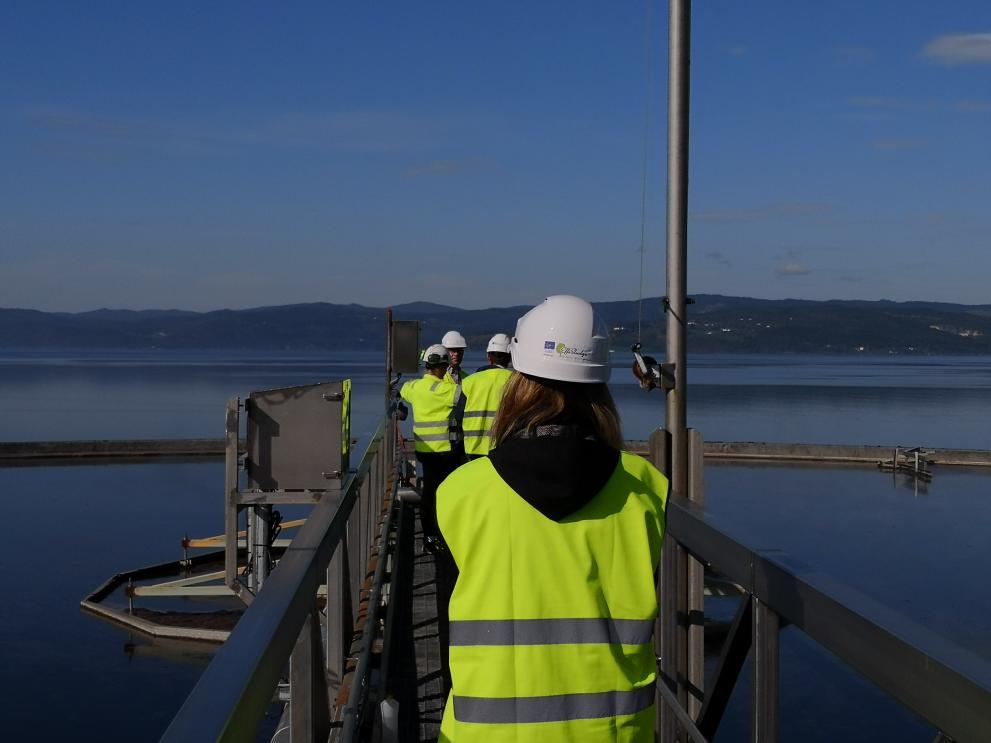
Clean water supports a diversity of plants and wildlife. It's crucial for our health and well-being and must be free of harmful contaminants to be safe for human consumption.
Today is World Water Day, and this year's theme is accelerating change to solve the water and sanitation crisis. Today also sees the opening of the UN 2023 Water Conference in New York, which should result in commitments and actions by governments to achieve key water-related goals and targets.
LIFE has been working hard to improve the quality of and access to clean water across Europe. Read about five examples below.
Freshwater by the sea
On the Greek island of Tinos, the SOL-BRINE project team set out to make seawater desalination more environmentally friendly. Their technology was solar-powered and recovered demineralised water and salt from the brine. During the project, they treated 200 tonnes of brine, producing 180 tonnes of water and 12 tonnes of salt. The approach increased the water recovery rate from seawater from 30 to 90%. Their innovation could be used by other islands facing water shortages.
Clean and green wastewater treatment
The Swedish team behind EffiSludge for LIFE has developed an integrated wastewater treatment method where the waste from one sector becomes a resource for another.
The team set up a demonstration plant in a paper mill near Trondheim, Norway. It cleaned wastewater from the paper mill, while biogas was generated from the fishing industry's wastewater and waste. The approach required much less energy than traditional methods. Also, the waste sludge could be reused to produce biomethane instead of being burned or sent to landfill.
Protecting bathing areas when sewers overflow
In Barcelona, stormwater overflows result in around 6 000 tonnes of solid particles being discharged into the sea each year, harming the coastline, the marine environment, and tourism. In Berlin, meanwhile, around 1 400 tonnes of these solids pollute the river Spree annually.
LIFE iBATHWATER developed an open platform that could monitor pollution in real-time and manage the sewage to reduce the amount of untreated wastewater during heavy rainfall. The team also came up with a measuring device called Aquabio, which monitored the quality of the cities' bathing waters, also in real-time.
Collecting algae for cleaner water bodies
Macroalgae and cyanobacteria grow from agricultural chemicals and untreated wastewater pouring into water bodies. The Lithuanian team behind AlgaeService for LIFE has been testing two prototype algae and cyanobacteria harvesting boats on eutrophic blooming rivers and lakes of different types and sizes. All the water bodies are in the catchments of rivers flowing into the Baltic Sea. Collecting the algae should result in cleaner inland water bodies and a healthier sea.
Being aware of water
Many local authorities and communities are unprepared for extreme weather events like flooding. The LIFE BEWARE project team is countering this by building sustainable urban drainage systems in Santorso and Marano Vicentino in Italy. The team is also helping introduce strategies that will help the region manage its water resources better.
All these LIFE projects support the EU's Biodiversity Strategy for 2030.
They also contribute to the Urban Waste Water Treatment (UWWT) Directive. This law requires all towns with more than 2 000 people to treat their wastewater. And in towns and cities with a population of over 10 000, even stricter testing is necessary.
And several align with the EU's Bathing Water Directive, which states that Member States must monitor their water bodies following specific guidelines.
Details
- Publication date
- 22 March 2023
- Author
- European Climate, Infrastructure and Environment Executive Agency

